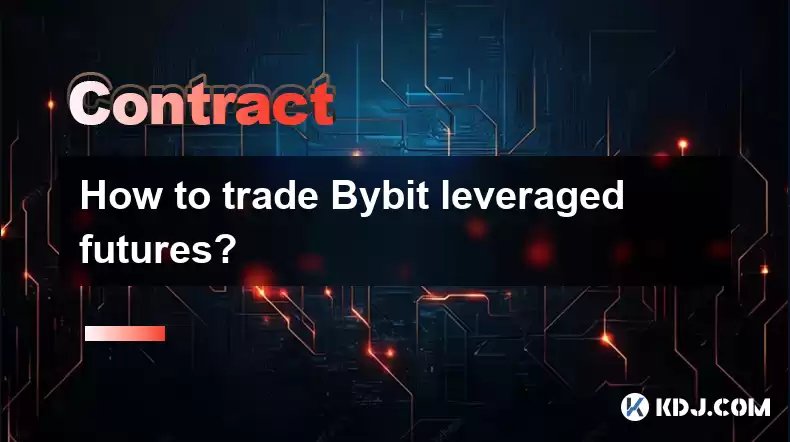-
 Bitcoin
Bitcoin $116700
0.24% -
 Ethereum
Ethereum $3973
4.34% -
 XRP
XRP $3.283
7.68% -
 Tether USDt
Tether USDt $1.000
0.01% -
 BNB
BNB $789.8
2.27% -
 Solana
Solana $176.2
3.31% -
 USDC
USDC $0.9999
0.00% -
 Dogecoin
Dogecoin $0.2238
5.14% -
 TRON
TRON $0.3389
-0.51% -
 Cardano
Cardano $0.7907
4.03% -
 Stellar
Stellar $0.4527
10.02% -
 Hyperliquid
Hyperliquid $41.07
4.27% -
 Sui
Sui $3.794
1.77% -
 Chainlink
Chainlink $19.49
10.40% -
 Bitcoin Cash
Bitcoin Cash $580.9
0.74% -
 Hedera
Hedera $0.2617
4.32% -
 Avalanche
Avalanche $23.41
3.67% -
 Ethena USDe
Ethena USDe $1.001
-0.03% -
 Litecoin
Litecoin $122.4
1.38% -
 Toncoin
Toncoin $3.364
1.49% -
 UNUS SED LEO
UNUS SED LEO $8.988
0.37% -
 Shiba Inu
Shiba Inu $0.00001295
2.82% -
 Uniswap
Uniswap $10.62
5.75% -
 Polkadot
Polkadot $3.922
4.46% -
 Dai
Dai $1.000
0.01% -
 Bitget Token
Bitget Token $4.494
2.15% -
 Monero
Monero $268.0
-1.30% -
 Cronos
Cronos $0.1523
3.68% -
 Pepe
Pepe $0.00001127
4.43% -
 Aave
Aave $285.4
4.85%
How to trade Bybit leveraged futures?
Trading Bybit leveraged futures can amplify market exposure with up to 100x leverage, but it's crucial to manage risk to avoid liquidation and maximize potential returns.
Apr 04, 2025 at 08:07 pm

Trading leveraged futures on Bybit can be an exciting way to engage with the cryptocurrency market. Leveraged futures allow traders to amplify their exposure to the market, potentially increasing both profits and losses. To start trading Bybit leveraged futures, you need to understand the basics of futures trading, the specific features of Bybit, and how to manage risk effectively. This article will guide you through the process step-by-step, ensuring you have the knowledge needed to trade confidently.
Understanding Bybit Leveraged Futures
Bybit is a popular cryptocurrency exchange that offers leveraged futures trading. Leveraged futures allow traders to borrow funds to increase their trading position, which can lead to higher potential returns but also higher risks. Bybit offers up to 100x leverage on certain trading pairs, which means you can control a position worth 100 times your initial margin. It's crucial to understand that while leverage can amplify gains, it can also magnify losses, potentially leading to liquidation if the market moves against your position.
Setting Up Your Bybit Account
Before you can start trading, you need to set up an account on Bybit. Here's how you can do it:
- Visit the Bybit website and click on the "Sign Up" button.
- Enter your email address and create a strong password.
- Complete the verification process by providing the required personal information and documents.
- Once your account is verified, you can deposit funds into your Bybit wallet.
After setting up your account, you'll need to familiarize yourself with the Bybit trading interface. Bybit offers a user-friendly platform with various tools and charts to help you make informed trading decisions.
Depositing Funds and Understanding Margin
To trade leveraged futures, you need to deposit funds into your Bybit account. Bybit supports deposits in various cryptocurrencies, including Bitcoin (BTC), Ethereum (ETH), and USDT. Here's how to deposit funds:
- Navigate to the "Assets" section on Bybit.
- Select the cryptocurrency you want to deposit and follow the instructions to transfer funds from your external wallet to your Bybit wallet.
Once your funds are deposited, you need to understand the concept of margin. Margin is the amount of funds required to open and maintain a leveraged position. Bybit uses a system called cross-margin and isolated margin. Cross-margin uses your entire account balance to prevent liquidation, while isolated margin allocates a specific amount of funds to each position.
Choosing a Trading Pair and Leverage
Bybit offers a variety of trading pairs, including BTC/USD, ETH/USD, and others. To start trading, you need to choose a trading pair and set your leverage. Here's how to do it:
- Go to the "Futures" section on Bybit.
- Select the trading pair you want to trade, such as BTC/USD.
- Choose your desired leverage level, up to 100x for certain pairs.
It's important to choose a leverage level that aligns with your risk tolerance. Higher leverage can lead to higher potential returns but also increases the risk of liquidation. Always consider your risk management strategy when setting your leverage.
Placing Your First Trade
Once you've chosen your trading pair and leverage, you can place your first trade. Bybit offers various order types, including market orders, limit orders, and stop orders. Here's how to place a trade:
- Navigate to the trading interface for your chosen pair.
- Decide whether you want to go long (buy) or short (sell) the asset.
- Choose your order type. For example, if you want to buy immediately at the current market price, use a market order.
- Enter the amount you want to trade and confirm your order.
After placing your order, you'll see your position in the "Positions" section of Bybit. You can monitor your position and make adjustments as needed.
Managing Risk and Using Stop-Loss Orders
Risk management is crucial when trading leveraged futures. Bybit offers several tools to help you manage risk, including stop-loss orders. A stop-loss order automatically closes your position if the market moves against you, helping to limit your losses. Here's how to set a stop-loss order:
- Go to the "Positions" section and select the position you want to manage.
- Click on "Modify" and enter the price at which you want your position to be closed.
- Confirm the stop-loss order.
In addition to stop-loss orders, you can use take-profit orders to automatically close your position when it reaches a certain profit level. By combining these tools, you can better manage your risk and protect your capital.
Monitoring and Adjusting Your Positions
Once you've opened a position, it's important to monitor it closely. Bybit provides real-time data and charts to help you track your positions. Here are some tips for monitoring and adjusting your positions:
- Regularly check the market conditions and your position's performance.
- Use Bybit's charting tools to analyze market trends and make informed decisions.
- Adjust your stop-loss and take-profit orders as needed to reflect changes in market conditions.
By staying vigilant and making adjustments as needed, you can better manage your positions and respond to market changes.
Understanding Liquidation and Margin Calls
When trading leveraged futures, you need to be aware of the risks of liquidation and margin calls. Liquidation occurs when the market moves against your position, and your margin falls below the required level. Bybit will automatically close your position to prevent further losses. A margin call is a warning that your position is at risk of liquidation, giving you a chance to add more funds or close the position.
To avoid liquidation, you can:
- Monitor your positions closely and adjust your leverage and margin as needed.
- Use stop-loss orders to limit your potential losses.
- Keep a portion of your funds as a buffer to cover potential margin calls.
Understanding these concepts and managing your risk effectively can help you trade more confidently on Bybit.
Advanced Trading Strategies
As you gain more experience with Bybit leveraged futures, you may want to explore advanced trading strategies. Here are a few strategies to consider:
- Hedging: Open positions in opposite directions to reduce risk. For example, if you have a long position in BTC/USD, you can open a short position in ETH/USD to hedge against market volatility.
- Scalping: Take advantage of small price movements by opening and closing positions quickly. This strategy requires close monitoring of the market and quick decision-making.
- Arbitrage: Exploit price differences between different exchanges or trading pairs. For example, if BTC/USD is trading at a higher price on Bybit than on another exchange, you can buy on the other exchange and sell on Bybit to profit from the price difference.
These strategies can help you maximize your returns and manage risk more effectively. However, they require a deeper understanding of the market and more advanced trading skills.
Using Bybit's Trading Tools
Bybit offers a range of trading tools to help you make informed decisions. Here are some of the key tools you can use:
- TradingView Charts: Bybit integrates with TradingView, providing advanced charting tools and technical indicators to help you analyze market trends.
- Order Book and Market Depth: The order book shows the current buy and sell orders, while the market depth chart helps you understand the liquidity of the market.
- Funding Rate: Bybit uses a funding rate mechanism to ensure the price of futures contracts aligns with the spot price. Understanding the funding rate can help you make more informed trading decisions.
By leveraging these tools, you can gain a deeper understanding of the market and make more informed trading decisions.
Common Questions About Bybit Leveraged Futures
Q: What is leverage in Bybit futures trading?
A: Leverage in Bybit futures trading allows you to control a larger position with a smaller amount of capital. Bybit offers up to 100x leverage on certain trading pairs, meaning you can control a position worth 100 times your initial margin. However, higher leverage increases both potential profits and potential losses.
Q: How do I calculate my potential profits and losses on Bybit?
A: To calculate your potential profits and losses, you need to consider the size of your position, the leverage you're using, and the price movement of the asset. Bybit provides a profit and loss calculator on its platform to help you estimate your potential gains and losses.
Q: What is a margin call on Bybit?
A: A margin call on Bybit is a warning that your position is at risk of liquidation. It occurs when your margin falls below the required level, and it gives you a chance to add more funds or close the position to avoid liquidation.
Q: Can I trade Bybit leveraged futures on a mobile app?
A: Yes, Bybit offers a mobile app for both iOS and Android devices. You can download the app from the App Store or Google Play and trade leveraged futures on the go.
Q: What are the fees for trading Bybit leveraged futures?
A: Bybit charges a maker fee of 0.01% and a taker fee of 0.06% for trading leveraged futures. Additionally, there may be funding fees based on the funding rate mechanism.
Q: How can I reduce the risk of liquidation on Bybit?
A: To reduce the risk of liquidation, you can use stop-loss orders to limit your potential losses, monitor your positions closely, and adjust your leverage and margin as needed. Keeping a portion of your funds as a buffer can also help cover potential margin calls.
Q: What is the difference between cross-margin and isolated margin on Bybit?
A: Cross-margin uses your entire account balance to prevent liquidation, while isolated margin allocates a specific amount of funds to each position. Cross-margin can help prevent liquidation but also puts your entire account at risk, while isolated margin limits the risk to the allocated funds for each position.
Q: Can I trade Bybit leveraged futures with USDT?
A: Yes, Bybit supports trading leveraged futures with USDT. You can deposit USDT into your Bybit wallet and use it to trade various trading pairs.
Q: How do I withdraw funds from Bybit?
A: To withdraw funds from Bybit, go to the "Assets" section, select the cryptocurrency you want to withdraw, and follow the instructions to transfer the funds to your external wallet. Make sure to double-check the withdrawal address to avoid errors.
Q: What are the benefits of trading Bybit leveraged futures?
A: Trading Bybit leveraged futures offers several benefits, including the ability to amplify your exposure to the market, access to a user-friendly platform with advanced trading tools, and the potential for higher returns. However, it's important to manage your risk effectively to avoid significant losses.
Disclaimer:info@kdj.com
The information provided is not trading advice. kdj.com does not assume any responsibility for any investments made based on the information provided in this article. Cryptocurrencies are highly volatile and it is highly recommended that you invest with caution after thorough research!
If you believe that the content used on this website infringes your copyright, please contact us immediately (info@kdj.com) and we will delete it promptly.
- Roman Storm, Funding Effort, and the Looming Defense Retrial: A New York Minute on the Tornado Cash Case
- 2025-08-09 02:50:14
- Crypto's Wild Ride: XRP, Dogecoin, and the Altcoin Surge You Can't Ignore
- 2025-08-09 02:50:14
- Elon Musk, Bitcoin, and the Enduring Power of Approval: A Crypto Love Story?
- 2025-08-09 03:50:15
- Ruvi AI: The Next Big Thing After Ripple on CoinMarketCap?
- 2025-08-09 03:50:15
- Floki Price Surges: Elliott Wave and Fibonacci Setups Point to Potential Gains!
- 2025-08-09 02:30:16
- Pepe Price, RTX (Remittix?) & the $10K ETH Dream: NYC Crypto Chatter
- 2025-08-09 02:30:16
Related knowledge

What is the difference between realized and unrealized PNL on KuCoin?
Aug 09,2025 at 01:49am
Understanding Realized and Unrealized PNL on KuCoinWhen trading on KuCoin, especially in futures and perpetual contracts, understanding the distinctio...

How does KuCoin Futures compare against Binance Futures in terms of features?
Aug 09,2025 at 03:22am
Trading Interface and User ExperienceThe trading interface is a critical component when comparing KuCoin Futures and Binance Futures, as it directly i...

What is the distinction between mark price and last price on KuCoin?
Aug 08,2025 at 01:58pm
Understanding the Basics of Price in Cryptocurrency TradingIn cryptocurrency exchanges like KuCoin, two key price indicators frequently appear on trad...

What are the specific maker and taker fees on KuCoin Futures?
Aug 08,2025 at 08:28am
Understanding Maker and Taker Fees on KuCoin FuturesWhen trading on KuCoin Futures, users encounter two primary types of fees: maker fees and taker fe...

Can you explain the difference between cross margin and isolated margin on KuCoin?
Aug 09,2025 at 02:57am
Understanding Margin Trading on KuCoinMargin trading on KuCoin allows traders to borrow funds to increase their trading position beyond their actual c...

How can I open a long position on KuCoin Futures?
Aug 09,2025 at 02:07am
Understanding KuCoin Futures and Long PositionsOpening a long position on KuCoin Futures means you are speculating that the price of a cryptocurrency ...

What is the difference between realized and unrealized PNL on KuCoin?
Aug 09,2025 at 01:49am
Understanding Realized and Unrealized PNL on KuCoinWhen trading on KuCoin, especially in futures and perpetual contracts, understanding the distinctio...

How does KuCoin Futures compare against Binance Futures in terms of features?
Aug 09,2025 at 03:22am
Trading Interface and User ExperienceThe trading interface is a critical component when comparing KuCoin Futures and Binance Futures, as it directly i...

What is the distinction between mark price and last price on KuCoin?
Aug 08,2025 at 01:58pm
Understanding the Basics of Price in Cryptocurrency TradingIn cryptocurrency exchanges like KuCoin, two key price indicators frequently appear on trad...

What are the specific maker and taker fees on KuCoin Futures?
Aug 08,2025 at 08:28am
Understanding Maker and Taker Fees on KuCoin FuturesWhen trading on KuCoin Futures, users encounter two primary types of fees: maker fees and taker fe...

Can you explain the difference between cross margin and isolated margin on KuCoin?
Aug 09,2025 at 02:57am
Understanding Margin Trading on KuCoinMargin trading on KuCoin allows traders to borrow funds to increase their trading position beyond their actual c...

How can I open a long position on KuCoin Futures?
Aug 09,2025 at 02:07am
Understanding KuCoin Futures and Long PositionsOpening a long position on KuCoin Futures means you are speculating that the price of a cryptocurrency ...
See all articles

























































































